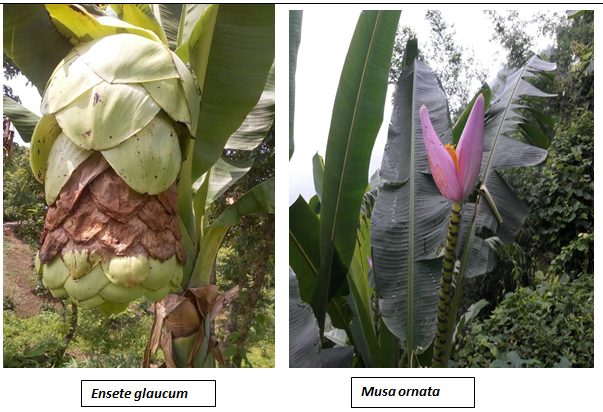Authors: Sanchita Ghosh1 and M.Ganga2
1Ph.D Scholar, Department of Floriculture and Landscaping, HC&RI, TNAU, Coimbatore
1 Associate Professor (Hort.), HRS, Ooty, TNAU
1Corresponding author: sanchitajolly28@gmail.com
Floriculture industry is dynamic and constantly changes its demand due to shift in consumer preferences. There is ample number of ornamental plants commonly used for landscaping purposes, pot plant, bedding plants etc. Apart from flowering plants; vegetables and fruit plants having ornamental value can also be exploited as alternative to bring diversity in ornamental Industry. They can also serve as germplasm for further carrying over breeding programmes to bring new colours with other desirable traits. Characterization of genotypes with ornamental characteristics to develop ornamental hybrids has also been reported (Santos- Serejo et al., 2007). Some of vegetables and fruits having ornamental value are flowering cherry, ornamental kale, ornamental banana etc. Musa spp. grows in a wide range of environment and they have several human uses starting from edible purposes, medicines, and also ornamental purposes. Some examples of ornamental Musa species includes self-peeling ‘Hot Pink’ or ‘Fuzzy pink’ (M. velutina); Ornata’ (several varieties of M. ornata); Blood/Rojo/Zebrina’ or ‘Variegated Red’ ( M. Acuminate subsp. zebrina); and ‘Okinawa torch’ (M. coccinea), Ensete glaucum etc. Ornamental bananas are relatively drought tolerant and can tolerate a wider range of rainfall thus making it suitable for landscape uses and also to coastal resorts and as cut flower for floral arrangements. Apart from this Musa coccinea, a brightly colored, crimson-flowered ornamental, has also been recommended as a component in a living fence. Minifruits of ornamental banana holds prospects for floral arrangements mainly due to their originality, representing an innovation for the flower and ornamental plant market, but they are yet to be commercially explored.
Description: Musa ornata is originated in India, Bangladesh and Myananmar (Burma). The inflorescences emerge from the tip of the plant having pink to lilac, petal-like bracts. The bananas are relatively small, greenish yellow to reddish purple. Flesh of this banana is edible but consists of numerous black seeds rendering it unsuitable for eating. Ensete glaucum popularly known as snow banana has a thick, waxy and blue, solitary trunk. It has swollen bulbous base and large leaves. The plant of Musa velutina is small (112 cm), with many tillers, green leaves with pink petiole and pink-purple short peduncle and erect inflorescence As soon as the fruits get ripen , the hull opens, revealing a central mass of the white pulp full of seeds, which emphasizes on its ornamental effect (Ha¨kkinen 2007).
Propagation
Banana and plantain are propagated principally by vegetative division and rarely by seeds. Inedible ornamental species ornamental Musa species such as ‘Fuzzy Pink or Pink Velvet’ banana (M. velutina), Ensete glaucum are examples of Musa species that are commonly grown from seed.

References
Santos-Serejo, J.A., E.H. Souza, F.V.D. Souza, T.L. Soares, and S.O. Silva. 2007. Morphological characterization of ornamental banana. Magistra 19:326–332.
Ha¨kkinen M (2007) Ornamental bananas: focus on Rhodochlamys Chron Hortic 47:7–12
About Author / Additional Info:
I am currently pursuing Ph.D in Floriculture and Landscaping from Tamil Nadu Agricultural University, Coimbatore.